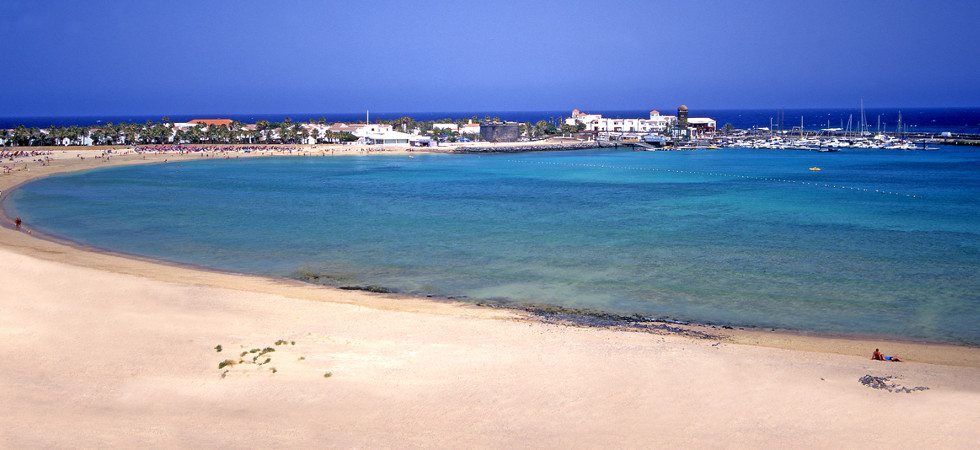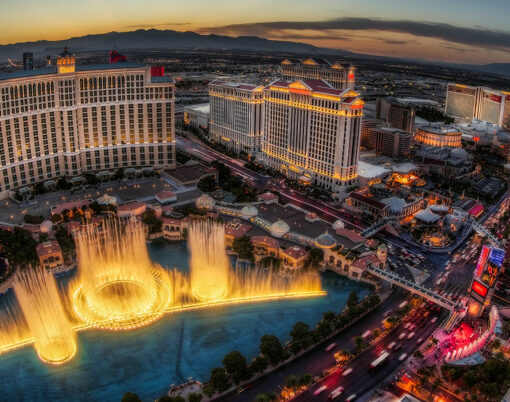Fuerteventura, located only one hundred kilometres from the coast of North Africa, covers 640 square miles and is the second largest of the ‘Islas Canarias’. Recognised as a UNESCO biosphere reserve in 2009, Fuerteventura attracts visitors keen to explore its protected area and hordes of outdoor sports enthusiasts’ take advantage of the year-round favourable climate.
Known as the ‘island of the eternal spring’, Fuerteventura is not as developed as the other Canary Islands and has retained its charm and natural volcanic beauty. This island may be rather small but it offers more than one hundred kilometres of pristine coastline. Water babes will be rewarded with gorgeous white sandy beaches, tranquil spots for uninterrupted leisurely dips in the briny, and it’s a surfer’s paradise due to the Atlantic Ocean’s considerable swells reacting to the summer Trade Winds.
For golf fans, the Salinas de Antigua 18-hole golf course, designed by world champion Manolo Piñeiro, is a popular attraction, and the surrounding hills and winds demand a tactical approach to the round. Volcanic and sand bunkers, lakes, natural vegetation and areas of desert will surely challenge the most experienced, and the par-4 11th hole tests the player’s skills as the ball must be played over the water.
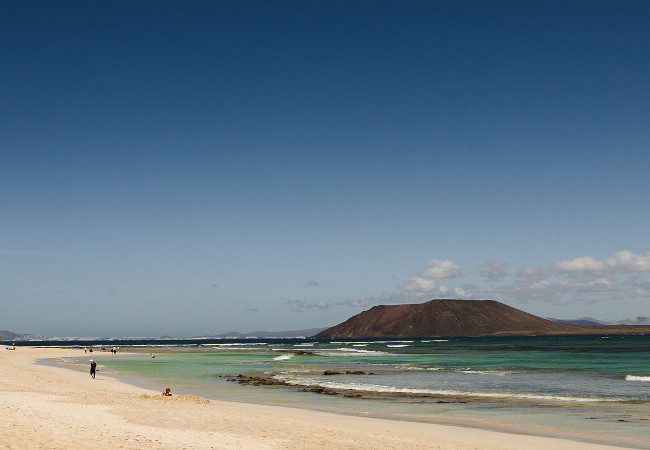
For those seeking another serene setting, La Oliva, in the northern sector, is a charming village, and was Fuerteventura’s political centre from the 17th to the mid 19th century. Fabulous beaches, turquoise blue seas and a slow, sedate, pace of life beckons.
Art lovers will be enchanted by La Oliva’s Casa de los Coroneles, a traditional stately home, which was once the residence of the island’s colonel. Thought to have been built in 1740, the property has been sensitively restored and reflects the Andalusian-Canarian architectural style perfectly. Admire the imposing façade of the upper floor, which features eight windows with intricately carved wooden balconies. Such extravagance in bygone days confirms the wealth and power of the property’s original owner and above the main entrance there is a plaque adorned with a fine coat of arms. Although today the interior is sparse, the ceilings are a work of art and visitors are welcome to view the photographs showing how the property looked prior to restoration and there are a number of elaborate and colourful portraits of past residents.
To view examples of local art take a leisurely stroll to the nearby Centro de Arte where spacious exhibition halls house contemporary works by local artists and for those in need of a breather there is a rather lovely shaded courtyard with a cacti garden surrounded by a selection of interesting sculptures.
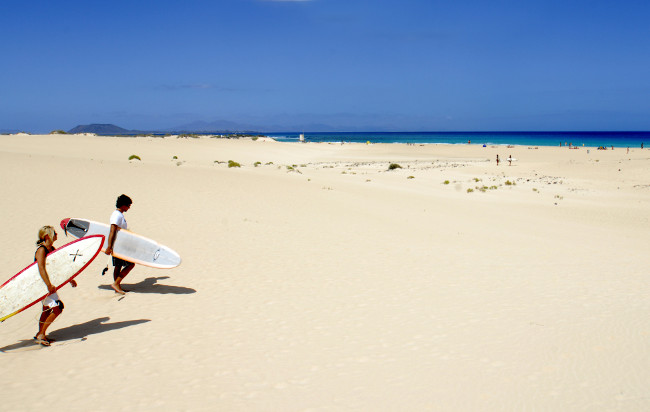
Betancuria, around 36 kilometres from La Oliva, is another delightful small town, which lies in a scenic valley and offers a fascinating glimpse into local culture. The town was once the island’s capital and is named after Jean de Béthencourt, the French explorer who led an expedition to the Canary Islands in 1402.
Invaded by marauding pirates in 1593, Betancuria was destroyed and although it remained the capital, the residents eventually moved away in search of more fertile land. In 1834 La Oliva was declared the first city until 1860 when Puerto del Rosario emerged as the new capital.
To learn more, visit the town’s Casa Museo Arquebiologico and then wander around the ruins of the 15th century Franciscan convent of Saint Buenaventura. Be sure to visit the adjacent Church of Santa Maria de Betancuria and appreciate the elements of Gothic, Renaissance, Baroque and Mudéjar architectural styles.
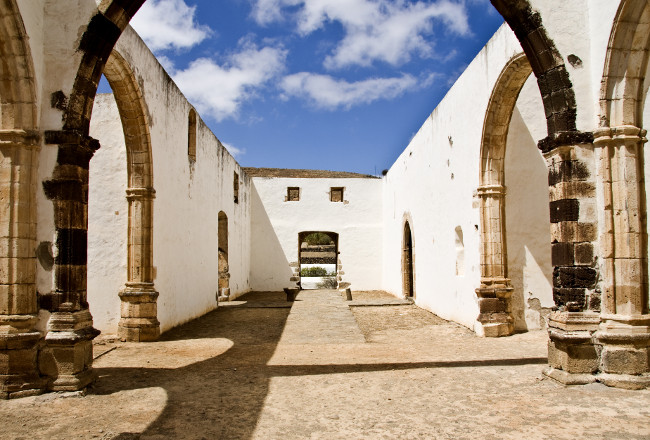
Fuerteventura’s main attraction, along with its beaches, is the Corralejo Nature Reserve. Located on the north eastern end of the island the area is made up of golden, rolling, sand dunes, shimmering in the sunshine. Stretching out for around ten glorious kilometres, this is the ideal spot for an afternoon picnic followed by a prolonged snooze.
For those seeking ample space in which to reside and keen to take advantage of the freedom that renting a privately owned property provides, Wimdu.co.uk offers more than 300,000 properties worldwide. I selected a two bedroom apartment, located in Corrolejo, and only 35 metres from the Nature Reserve.
Covering an area of 50 square metres, the apartment is set in a peaceful and private residential complex and it provided a welcome retreat after long arduous days of exploration. The south facing terrace and direct access to two spacious swimming pools, surrounded by palm trees swaying in the breeze, was just the ticket.
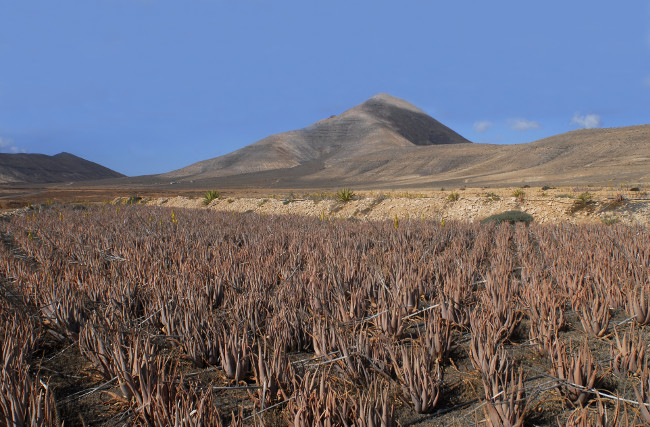
Fuerteventura, which translates to ‘strong fortune’, is, quite simply, a Spanish treasure.
Top Travel Tip
For more information on Wimdu properties worldwide including Fuerteventura visit wimdu.co.uk/fuerteventura. Featured property reference – ELYDBCCS.
Travel Tip – Fuerteventura flights
Thomas Cook Airlines, recipient of the 2016 World Travel Award for ‘Europe’s Leading Charter Airline, offers low fares, simple check-in procedures and a high level of on board comfort and service. For more information visit thomascookairlines.com.
Images courtesy of Patronato de Turismo de Fuerteventura












